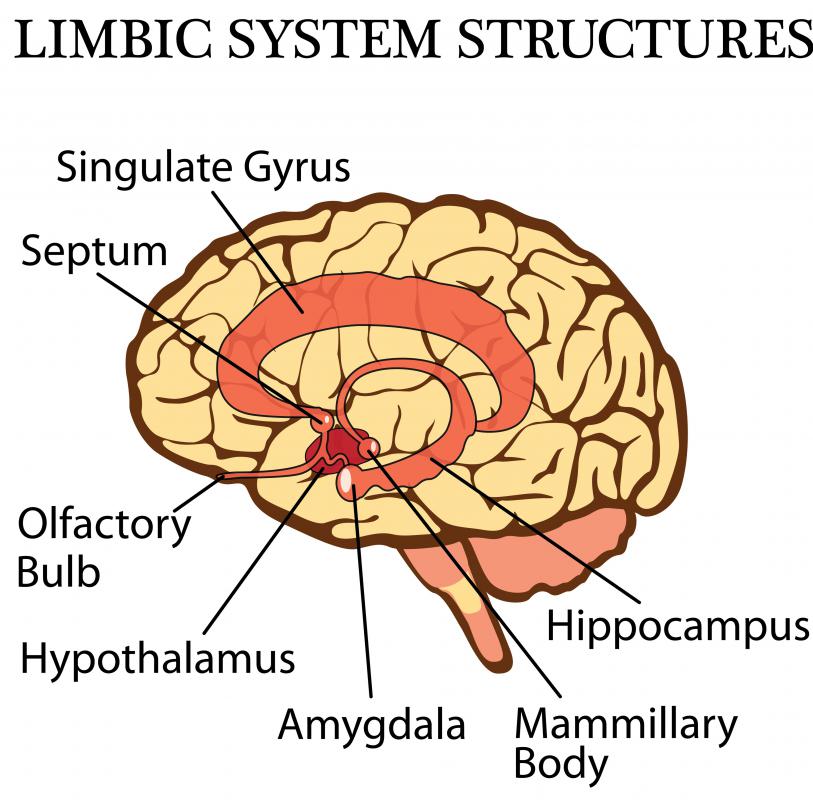At WiseGEEK, we're committed to delivering accurate, trustworthy information. Our expert-authored content is rigorously fact-checked and sourced from credible authorities. Discover how we uphold the highest standards in providing you with reliable knowledge.
What is the Connection Between the Amygdala and Anxiety?
The fundamental connection between the amygdala and anxiety is that the amygdala produces anxiety responses. This organ tells the body when it is in a dangerous situation and triggers an anxiety response. Anxiety disorders often develop when the amygdala is over-stimulated. Together, the amygdala and anxiety are responsible for responses to perceived threat, emotional memory, and fear conditioning.
The amygdala is one of the most primal, unchanged organs in the brain. The amygdala is located in the medial temporal lobes of the brain. It is a part of the limbic system and is primarily responsible for processing and recording emotional responses, such as anxiety.

The amygdala is responsible for determining the appropriate emotional response to external stimuli. For example, if a person is attacked by a mugger, the amygdala recognizes the event as threatening. It then sends a message to the rest of the body, preparing it for what is commonly called fight or flight. The fight or flight response is essential to human survival and dates back to when humans lived in caves. It sends a message to the muscles and nervous system, preparing the body to fight, run away, or freeze.

Another connection between the amygdala and anxiety is fear conditioning. The theory is that the amygdala stores memories of emotionally charged experiences, such as a dog attack. This is another critical survival tool. The memory is stored and helps the person avoid dangerous situations in the future. The first time a person burns himself or herself, the memory is stored in the amygdala, and that person knows to avoid burning himself or herself again.

According to behavioral psychology, fear conditioning is at the heart of most anxiety disorders such as phobias, panic disorders, and generalized anxiety disorder. Disorders develop when the amygdala is over-stimulated. Instead of using the memory of the dog attack to avoid future dog attacks, the mere sight of a dog is associated with a death threat.

Emotional memory is another example of a connection between the amygdala and anxiety. When a person experiences an event that elicits an emotion such as anxiety, the memory and anxiety are stored in the amygdala. Years later, when that person thinks about the experience, he or she will also feel some of the anxiety that was stored with the memory.
The amygdala and anxiety are also connected in more subtle ways. Not only is the amygdala on the lookout for obvious threats like dog attacks, but it also plays a key role in interpreting facial expressions and body language. Behavioral evidence shows that the amygdala is capable of triggering an anxiety reaction from something as simple as an angry gaze.
AS FEATURED ON:
AS FEATURED ON:














Discussion Comments
What would happen if the amygdala is impaired?
Are we still going to be able to produce emotional or fear responses?
Post your comments